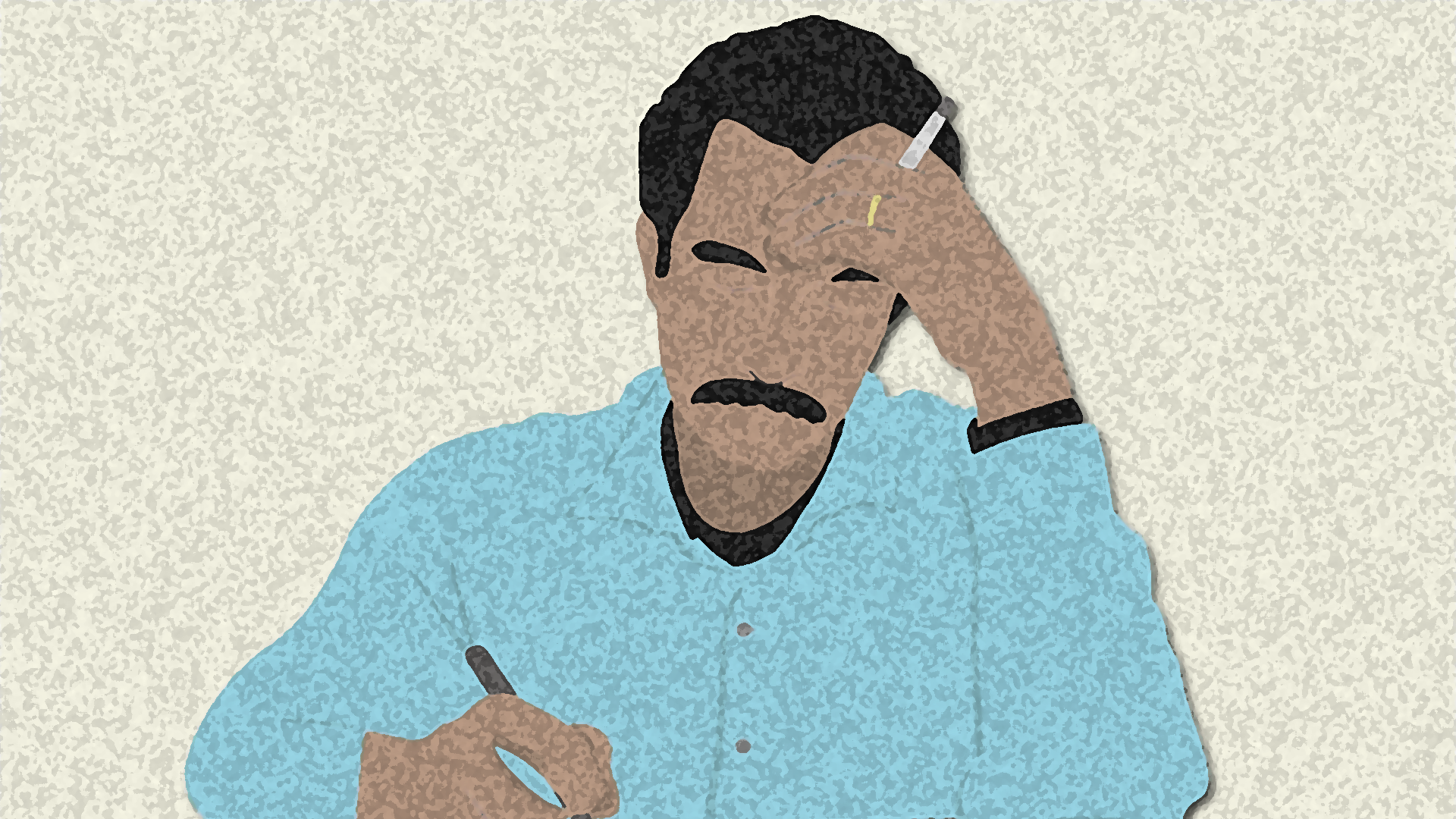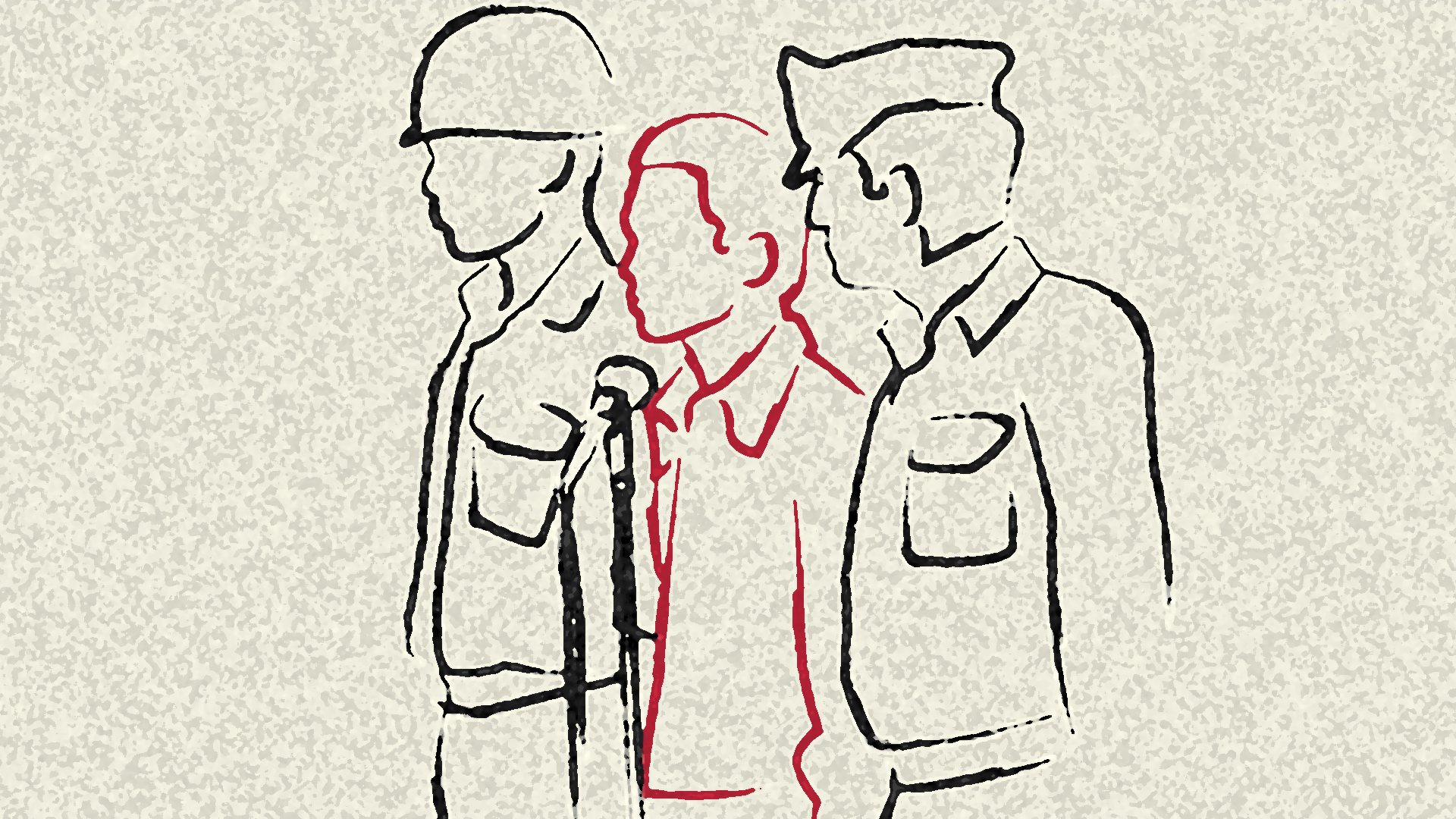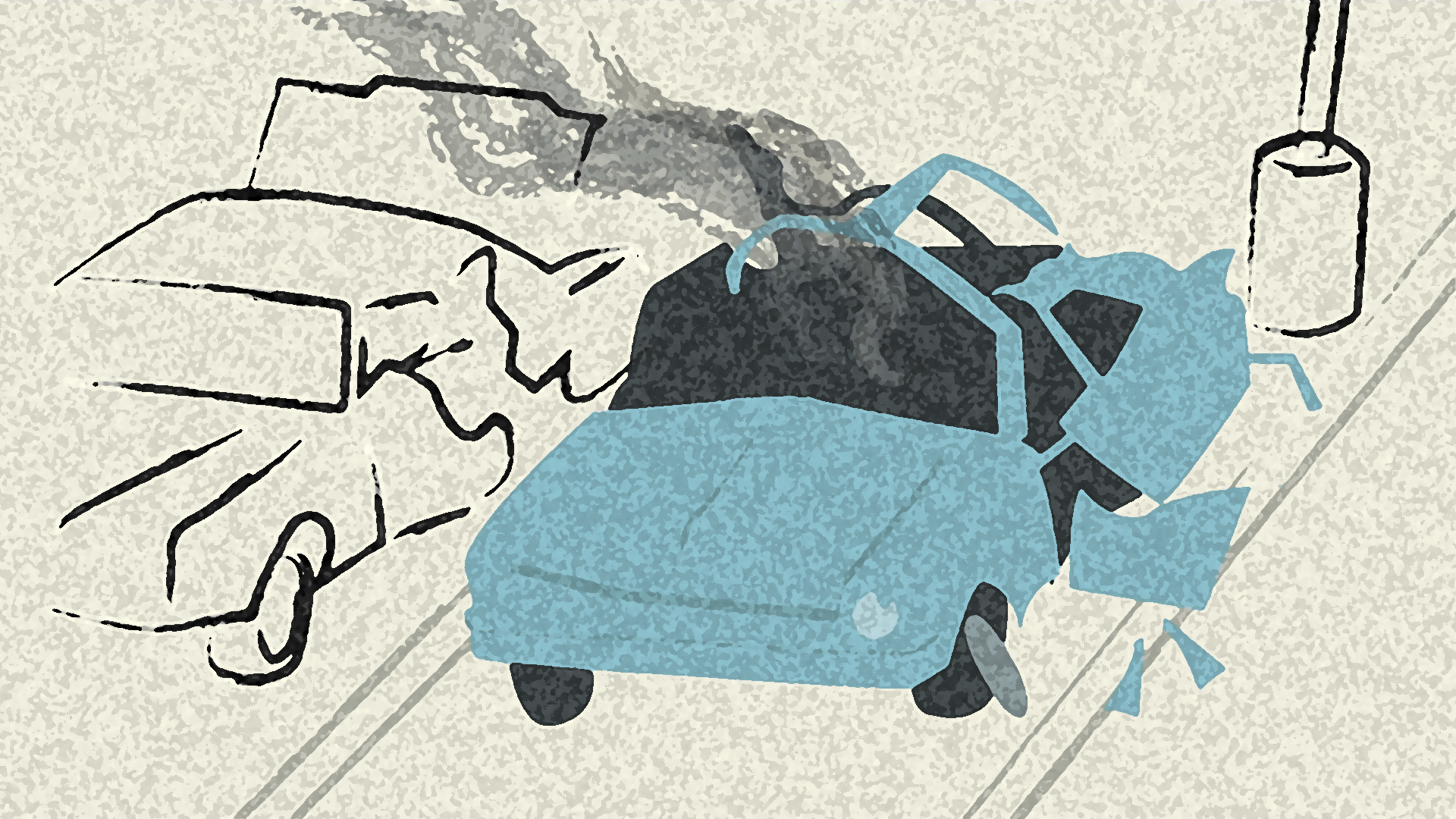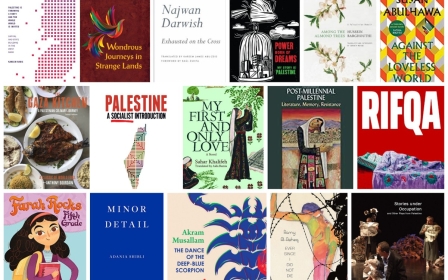
Ghassan Kanafani: The life of a Palestinian writer

Ghassan Fayiz Kanafani was born in Acre (Akka) in 1936 during the British Mandate occupation of Palestine, to Fayiz, a lawyer, and his wife Aisha al-Salim. The couple had eight children. Ghassan was the third. As a young boy, he studied at the renowned College des Freres, a French Catholic missionary school in Yafa (now Jaffa), but was unable to complete his education there. In 1948, aged just 12, the Zionist capture of Palestinian land forced the Kanafanis into exile.
The family first sought refuge in nearby Lebanon and then in the Syrian capital Damascus. Kanafani shared his memories of his early childhood experiences in his short essay The Land of Sad Oranges. (All illustrations by Haroon James)

In Damascus, Kanafani found work at a printing press to support his family - perhaps the spark for his later career as a writer. By night, he would study and later qualified as an art teacher, starting work for UN refugee agency schools in 1953. It was around this time that the teenager became more politically aware, after meeting the Palestinian revolutionary George Habash.
Habash was from Lydd (Lod) and like Kanafani, was forced to flee his homeland during the establishment of Israel. His Arab nationalist and revolutionary socialist ideology had a big impact on Kanafani's own thought, and it was Habash who convinced Kanafani to start writing for Al-Rai (The Opinion) newspaper.
In the early 60s, Habash founded the Popular Front for the Liberation of Palestine (PFLP), a revolutionary organisation whose military wing targeted Israeli interests with guerilla operations and bombing attacks against civilian targets, as well as plane hijackings. Kanafani served as the group's spokesman and the editor of its weekly magazine, Al-Hadaf.

A young Kanafani was in his early years described by fellow Palestinian journalist Rassem Al-Madhoun as having a “fragile grasp” of Arabic, perhaps because of his time studying at a French school.
Recognising this, Kanafani decided to study Arabic Literature at the University of Damascus. By 1957, Kanafani had published his first short story, A New Sun. In the brief but remarkable writing career that followed, Kanafani produced some of the Arab world's most celebrated works of fiction, including Men in the Sun, a story that follows Palestinian labourers looking for work in the Gulf and explores themes of sexuality, masculinity and rootlessness.
In the short story Return to Haifa, a Palestinian couple come back to the home they were expelled from in 1948 in search of the infant son who went missing when they fled. They arrive at the house and find that it now occupied by an Israeli couple who have adopted the child and raised him as an Israeli Jew. The work is an expression of how for Palestinians, the familiar can become strange, and symbolises the way their own hopes for the future remain locked in an irresolvable clash with those of the Israelis.
Speaking on Kanafani's transformation into one of the Arab world's most important writers, Madhoun wrote: “He extracted the language’s most beautiful expressions and became one of its most captivating writers.”

Kanafani briefly lived in Kuwait before moving to Beirut in 1960, where he met his wife, the Danish activist Anni Hover, who was in the Middle East to learn more about the Palestinian struggle.
The couple married in 1961 and had two children, a son named Fayez and daughter called Laila. In her book dedicated to Kanafani, My Husband, My Teacher, Hover writes: “I came to Lebanon more than ten years ago to 'study' the Palestine problem. In you I found Palestine - the land and its people - and through our marriage I became part of Palestine…”

On 30 May 1972, three members of the Japanese Red Army working in collaboration with the PFLP opened fire on passengers at Lod Airport (later renamed Ben-Gurion Airport) killing 26 people. Two of the attackers were killed but Kozo Okamato (depicted above while in detention) was arrested and imprisoned by Israeli authorities.
Kanafani did not take part in violence himself but was an advocate of attacks against Israel. The author rejected the idea of negotiations and when asked why Palestinians don't "just talk" to the Israelis, responded "talk to whom"? He continued: "That’s the kind of conversation between the sword and the neck." After the massacre, Israel's Mossad intelligence agency decided to target members of the PFLP.

In Beirut on 8 July 1972, a 36-year-old Kanafani and his 17-year-old niece Lamees Najim got into his Austin 1100. Turning on the ignition, he triggered a car bomb that immediately killed the pair. Mossad later claimed responsibility for the assassination.
Kanafani left behind a legacy as one of Palestine and the Arab world's greatest writers, with schools and cultural organisations named after him across the region.
In Israel he is remembered as a terrorist, but Palestinians celebrate him for his literary skill and his tender portrayal of their struggle. His stories laid the ground work for other Palestinian authors who helped develop his concept of "resistance literature".
In its obituary, Lebanon’s The Daily Star newspaper called Kanafani a “commando who never fired a gun, whose weapon was a ballpoint pen, and his arena, newspaper pages.”
This article is available in French on Middle East Eye French edition.
Middle East Eye propose une couverture et une analyse indépendantes et incomparables du Moyen-Orient, de l’Afrique du Nord et d’autres régions du monde. Pour en savoir plus sur la reprise de ce contenu et les frais qui s’appliquent, veuillez remplir ce formulaire [en anglais]. Pour en savoir plus sur MEE, cliquez ici [en anglais].




